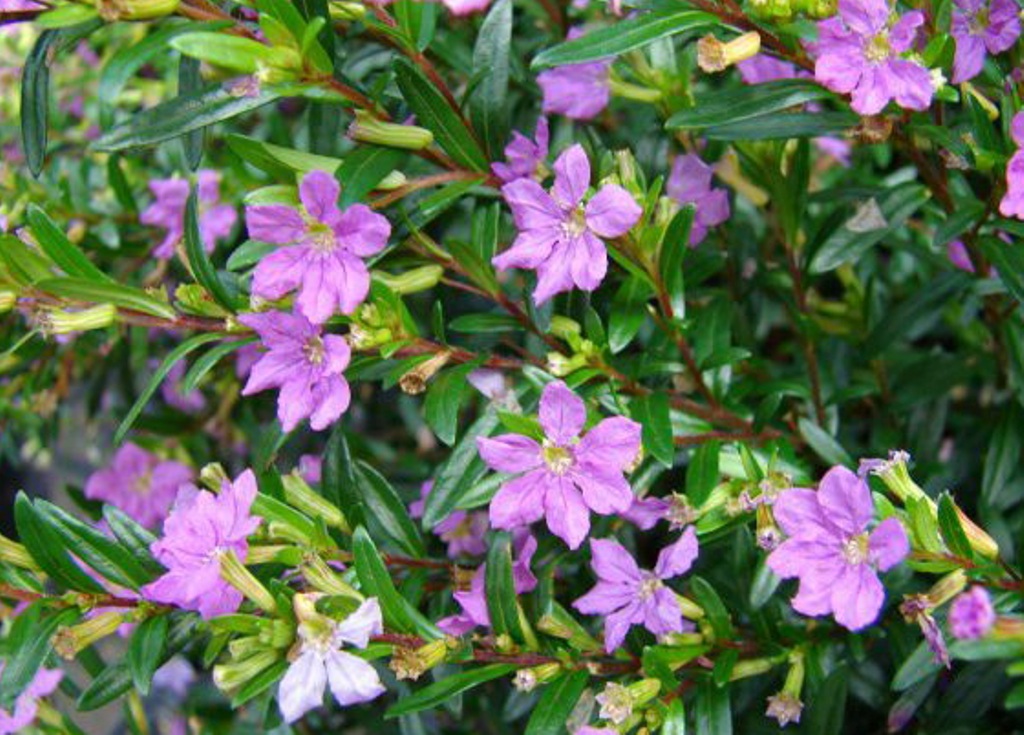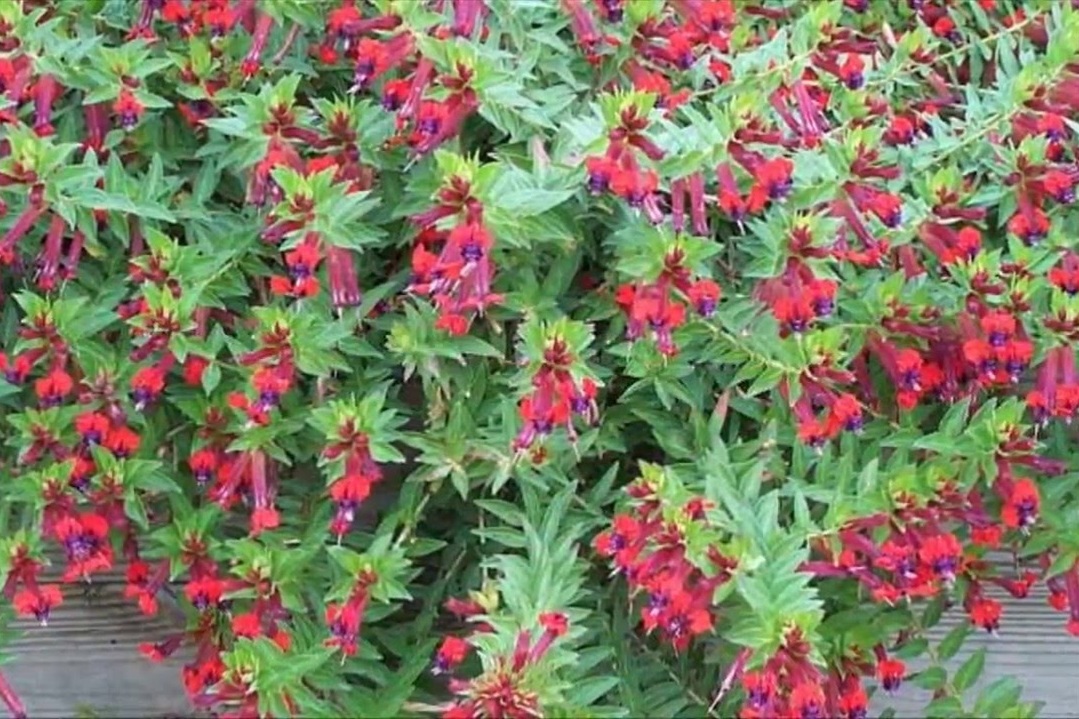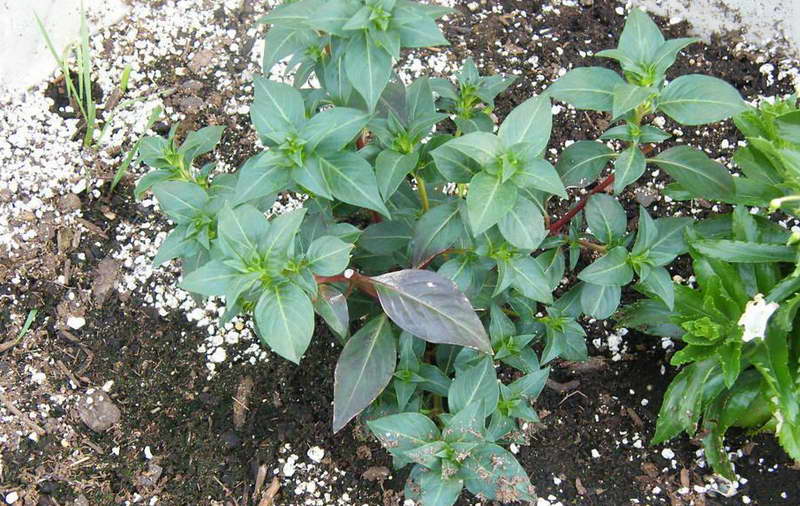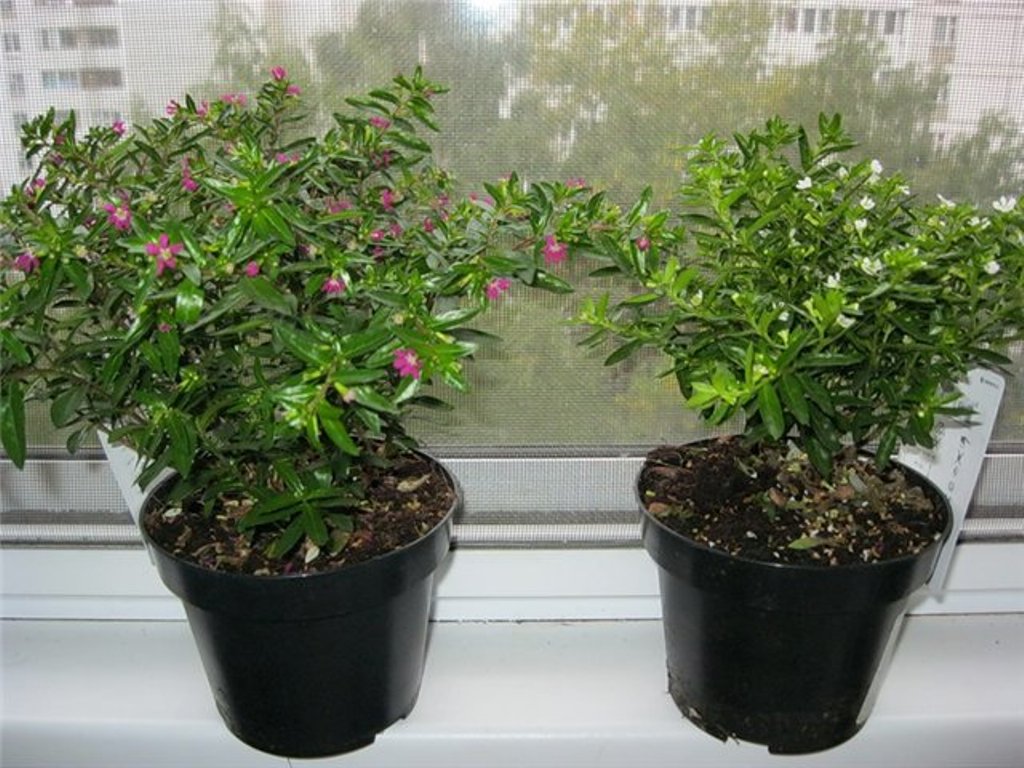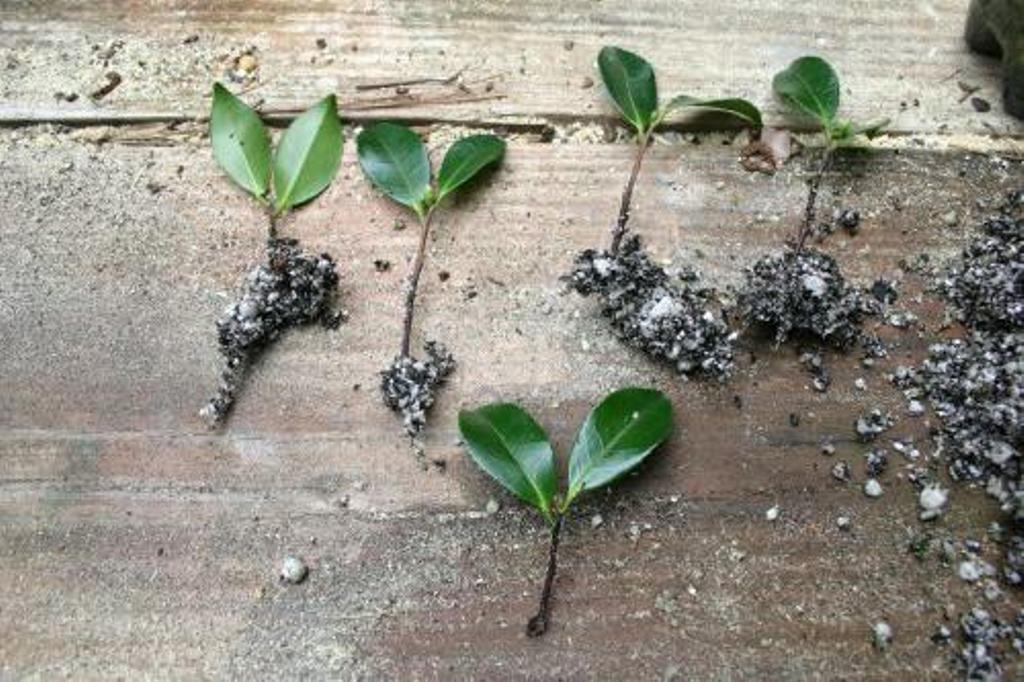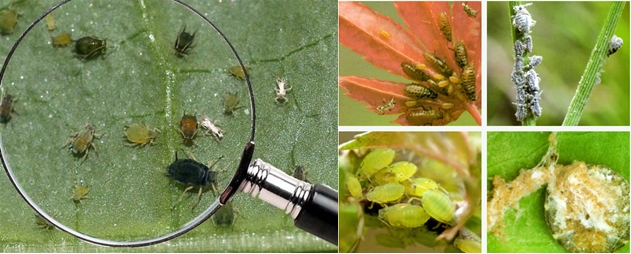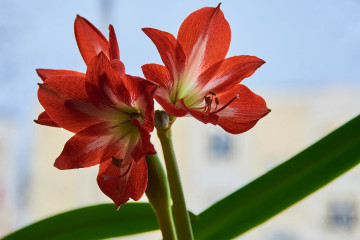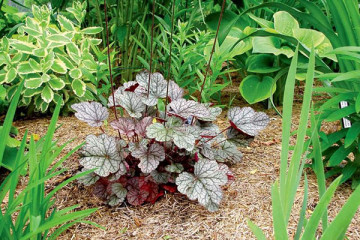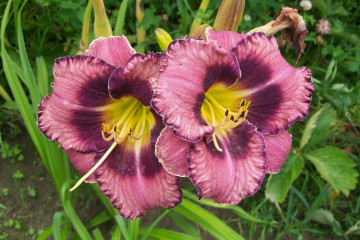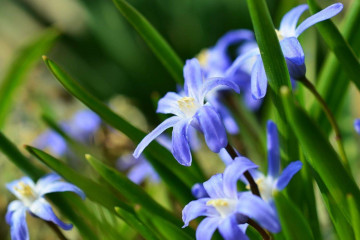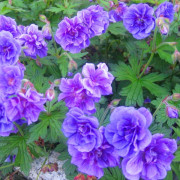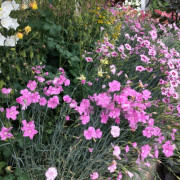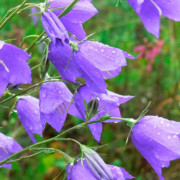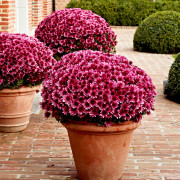Kufeya - planting and care in the open field and at home
Content:
Kufea is a green shrub plant that blooms in the warm season. Represents the Derbennikov family. The native land is South and Central America.
Description of the kufei flower
The kufei flower comes from the Greek word "kyphos", which means "bent, crooked." The name appeared due to the bent shape of the seeds. The flower is great for both indoor growing and summer cottages. It has many curved leaves of a narrowish shape, and the edges of the tops are pointed. A shrub or ampelous plant reaches 1 m in height. It has elongated cigar-like flowers. The color palette is varied. These are mainly delicate colors.
Flowering period
The flowering period for kufei is long - from early spring to late September. In some species, wintering lasts until frost. In the southern regions, frost-resistant kufei are able to withstand frost down to -12 ℃.
Varieties and varieties of kufei
The plant has many varieties. Popular varieties worth considering:
- Hyssopoly kufeya (Cuphea hyssopifolia). Lush shrub, reaching 50 cm in height. It has a large number of dark green leaves. Small buds are characteristic of the flowers. The color of kufei hyssopolis has lilac, pink, white. The shrub is great for bonsai decoration.
- Fiery red kufea (Cuphea ignea). Possesses semi-shrub vegetation. The height is 40 cm. The shape of the leaves is rounded, dark green. The flower buds are large, single. The fiery red kufeya is red in color.
- Micro-petal kufeya (Cuphea micropetala). The plant grows up to 40 cm in height. The leaves are narrow, small. The flowers are small and appear as they grow. They have a yellowish, pink color.
- Lanceolate kufeya (Cuphea lanceolate). Can be up to 90cm in height. Leaves are light green. The flowers are large, dark lilac in color. It begins to bloom in late July.
- Pale kufeya (Cuphea pale). Annual shrub. It has lush, dark green foliage. Differs in small flowers of dark red color. It grows to the very frost.
- Spread kufeya (Cuphea procumbens). The shrub grows up to 40 cm in height. Branched stems. Castings are thick, dark green. Flowering occurs in mid-summer. The flowers are purple and violet.
Planting kufei in open and closed ground
Kufa planting and leaving in the open field is not difficult. The species is grown as an annual plant. It is often used as an element of landscape design (in vases, pots). Kufeya prefers warmth and soil saturated with minerals, good moisture permeability, and low acidity.
You can prepare soil suitable for growing yourself, for this they use:
- humus;
- garden soil;
- perlite or quartz sand.
Lighting and temperature
Plant the plant in a sunny location. If there is not enough light, the bushes may not bloom. Do not allow sunlight to enter, this can lead to drying of the flower. When growing at home, it is recommended to remove the pot in a shaded place.
How to plant
Before planting, prepare the ground by adding humus or ash to it. Mix the soil well with fertilizers. The plant is planted in damp holes. The distance between the bushes should be 20 cm, and between the rows - at least 30 cm.
Caring for kufei at home and in the garden
Kufeya home care is an important part of growing. To get a beautiful and healthy plant, you should follow the basic rules of care.
Watering
Watering is carried out at any time of the year. Water the flower every 2 days, preventing it from drying out. The leaves are sprayed with a spray bottle. In autumn and winter, the frequency of watering is reduced.
Fertilizer
Manure is added to the holes before planting. At the time of the beginning of flowering, fertilizer is reapplied. From spring to winter, they are fed with strengthening components. Regularity is important - the optimal feeding regime is once every two weeks.
Pruning
To make the kufei bushes look chic and well-groomed, pruning is necessary. It is recommended to pinch the tops of the regrown shoots. The isopolistic view is distinguished by branching, which gives unusual forms to the crown.
Transfer
An indoor plant is transplanted annually. To do this, remove the flower from the pot. Be sure to inspect the roots so that everyone is safe and sound.
Resting care
A rest period is necessary for kufei after a long flowering to restore strength (from early November to March). During this period, the plant is kept at room temperature and watered every 10 days.
Reproduction methods
Kufeya is propagated in several ways:
- germination of seeds;
- rooting cuttings;
- air layering;
- dividing the bush.
Germinating seeds
The method is rarely used. The seed of the plant is small and does not germinate well. But still there is such a way. For its implementation, the seeds are laid out on damp ground and pressed a little into the ground. They do not fall asleep from above, but cover with a film, creating a greenhouse effect. The temperature should be at least +22 ℃. When sprouts appear, the film is removed and seated in a convenient dish.
Rooting cuttings
The most common way. In the spring, cuttings with a length of 15 cm are cut off from the shoots. The root part of the cuttings is treated with a stimulant and planted in moist soil under a plastic bottle until the leaves grow. The bottle is removed for watering and airing the plant. Subsequently, a transplant is carried out.
Reproduction by layering
The easiest breeding method. It is used in the warm season. First, the length of the future leash is measured on the shoot. Then the stem is cut. It is treated with a growth stimulant for the rapid emergence of roots. To prevent the cut from being tightened, a stone or a piece of film is placed inside. Wrap the stem with foil. Finally, the sprouts are transplanted into a prepared pot of soil.
By dividing the bush
Convenient and easy way. Dig the plant out of the ground. Cut off shoots up to 10 cm in height. After that, a branch is cut off from the bush, which has a good stem, and is treated with a fungicide. The separated roots are planted in moist soil.
Diseases and pests
Kufeya tolerates diseases well. Mites pose a danger to the plant. They twist cobwebs on leaves and stems. For treatment, the plant is washed with soapy water; chemicals are used for a reliable result.
The greatest damage to the plant is caused by the scale insect. It leaves brown spots on the leaves. You can remove it with soapy water, cleaning the leaves with a brush on both sides. It is advisable to treat them with an insecticidal agent.
Cufea in design
Kufeya looks gorgeous in designs. She will decorate any corner of the house, garden or porch. The bushes are excellently combined with annual crops. Due to the high growth of kufei, it is planted in the middle, and supplemented with other flowers on the sides. The variety of colors makes the bouquet unusual and bright.
